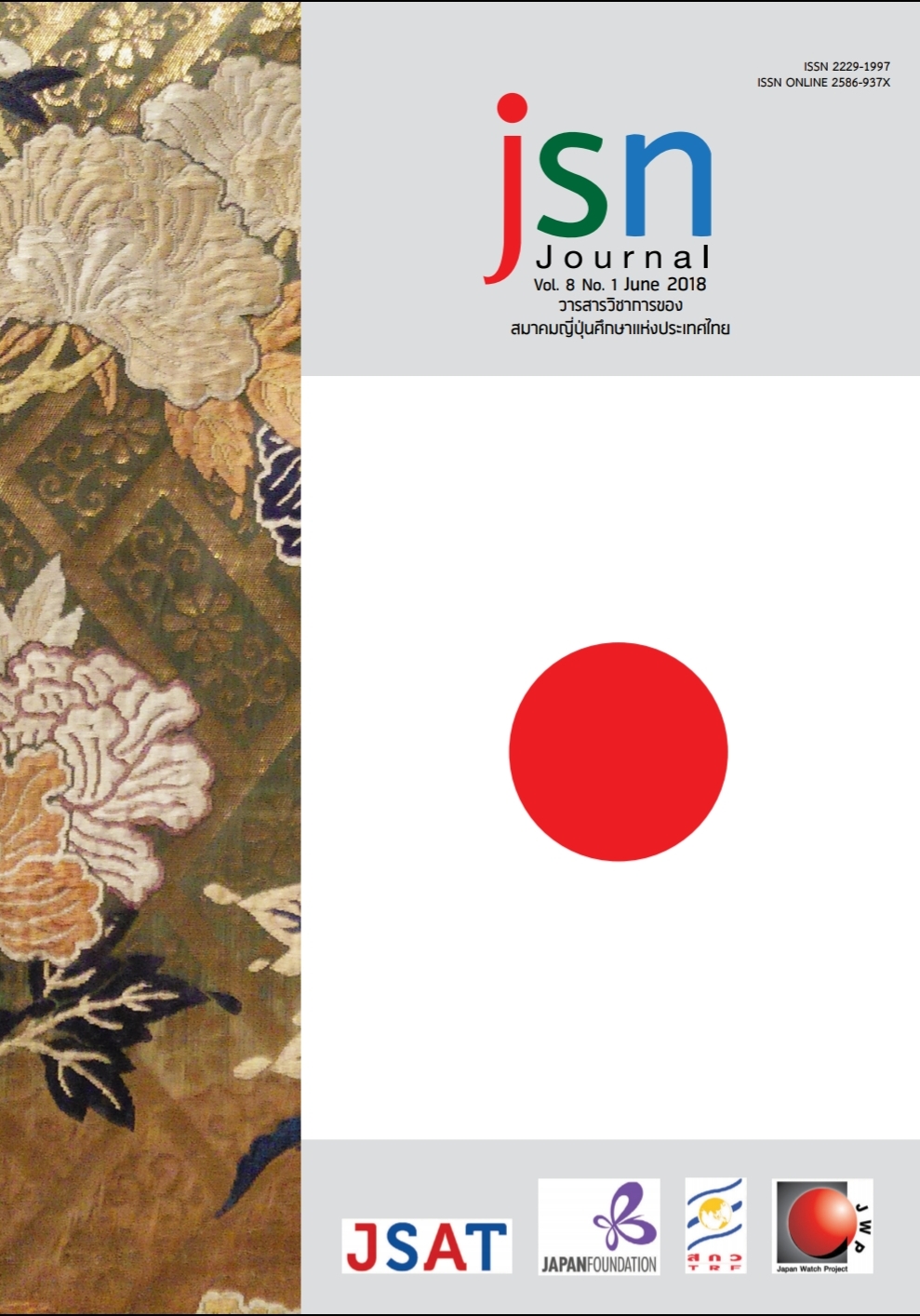Hollow State?: A Case Study of Privately-run Elderly Residences in Japan
Main Article Content
Abstract
Hollow State is a concept that many public administration scholars give importance to with caution (Rhodes, 1993; Peters, 1994; Milward และ Provan, 2000 และ 2003; Skelcher, 2000; Prakorn, 2560). This is because state functions as well as public service deliveries are performed by other types of agencies, such as Quangos, private agencies, and civil society agencies to the point that many state’s roles have been diminished and finally no longer important. Usually, public service delivery on social works function is delivered by the public sector. However, when private sectors have participated in social works service delivery more and more, will the state be hollowed out like the scholars concern? The researchers therefore explore the management of private residence for elder in Japan. The finding shows that 1) the fact that the role of private sector in delivering public service on social work function is increasing judging by the numbers of private residence for elder in Japan and it might cause Japan public sector to face hollow state phenomena. However, the result shows that it does not affect the hollow state condition that scholars concerned. This is because public sector still has a role in regulating this private residence for elder that it cannot prohibit others who are not residence members from using a health clinic in the property. In addition, the law wouldn’t allow the residence to exclude owners’ relatives or friends to enter or stay in the premise. 2) Private sectors enter residence for elder business because the work of market mechanism that elders can be separated into a group, which has the ability to pay and willing to pay extra in addition to the benefit received from LTCI. The reason that private sector steps in because they can make profit; however, they will leave the responsibility of taking care of elders who have no ability or do not want to pay extra from what they already received from LTCI. 3) Private sector comes into business with an idea of health prevention by using anti-ageing and regenerative science. As a result, this health prevention will slow the process of sickness and regenerate health for elders. The government budget on curative care, which is the big problem in super aged society, then will be used at a later time. In conclusion, the worrisome of the hollow state on social work functions will not happen in Japan, because private sector does not threaten the state function by increasing its role in delivering service of this kind. On the other hand, private sector helps lessening the burden of public sector by taking away medium to high income residents. As a result, Thai public sector should learn from this trend in order to adjust and minimize the burden of taking care of the elders, which are an important problem in Thailand and is a step closer to aged society in 2026.
Article Details
ข้อความและข้อคิดเห็นต่างๆ ในบทความเป็นของผู้เขียนบทความนั้นๆ ไม่ใช่ความเห็นของกองบรรณาธิการหรือของวารสาร jsn Journal
References
ข่าวสด (2559). ตาม “ธอส.” สู่เมือง “ชิบะ” ศึกษาชุมชน “ผู้สูงอายุ”. ข่าวสด. สืบค้นจาก at http://daily.khaosod.co.th/view_news.php?newsid=TURObFkyOHlOVEE0TURVMU9RPT0=§ionid =TURNd05RPT0=&day=TWpBeE5pMHdOUzB3T0E9PQ==
ฐานเศรษฐกิจ (2559). 2568 สังคมวัยทองเต็มเมือง ธนาคารอาคารสงเคราะห์เตรียม 1 หมื่นล้านเข็นโครงการ.ฐานเศรษฐกิจ. สืบค้นจาก at http://www.thansettakij.com/content/60361
ไทยพับลิก้า (2559). “Smart Community – Senior Park Support” โมเดลสังคมผู้สูงอายุกรุงโตเกียว มุ่งยกระดับชีวิตไม่ใช่แค่ “สถานพยาบาลชั้นดี”. ไทยพับลิก้า. สืบค้นจาก at https://thaipublica.org/ 2016/04/smart-community/
ปกรณ์ ศิริประกอบ (2560a). ถอดบทเรียนการบริหารจัดการสังคมสูงวัยระดับสุดยอดของภาครัฐญี่ปุ่น: มองผ่าน 3 พาราไดม์ทางรัฐประศาสนศาสตร์. วารสารเครือข่ายญี่ปุ่นศึกษา, 7 (2), 39-64.
_____ (2560b). 3 พาราไดม์ทางรัฐประศาสนศาสตร์: แนวคิด ทฤษฎีและการนำไปปฏิบัติจริง. (พิมพ์ครั้งที่ 4) กรุงเทพฯ: โรงพิมพ์แห่งจุฬาลงกรณ์มหาวิทยาลัย.
_____ (2558). 3 พาราไดม์ทางรัฐประศาสนศาสตร์: แนวคิด ทฤษฎีและการนำไปปฏิบัติจริง.กรุงเทพฯ: โรงพิมพ์แห่งจุฬาลงกรณ์มหาวิทยาลัย.
ประชาชาติธุรกิจออนไลน์. (2559, 30 เมษายน). สุโค่ย! คอมมิวนิตี้คนแก่ในญี่ปุ่น สุดยอดต้นแบบรับสังคมผู้สูงอายุ. ประชาชาติธุรกิจ. สืบค้นจาก at https://www.prachachat.net/news_detail.php?newsid=1461941219
สุวัฒนา เลิศมโนรัตน์ (2546). ระบบประกันสังคมของญี่ปุ่น: กรณีศึกษาการดูแลระยะยาว. (วิทยานิพนธ์ปริญญามหาบัณฑิต มหาวิทยาลัยธรรมศาสตร์).
Arai, H., Ouchi, Y, Toba, K, Endo, T., Shimokado, K. Tsubota, K. Matsuo, S., Mori, H. Yumura, W. Yokode, M., Rakugi, H. & Ohshima, S. (2015). Japan as the Front-runner of Super-aged Society: Perspective from Medicine and Medical Care in Japan. Geriartrics & Gerontology International, 15, 673-687.
He, W., Goodking, D. & Kowal, P. (2016). U.S. Census Bureau International Populations Reports, An aging world: 2015. Washington, DC: U.S. Government Publishing Office.
Ikegami, N., Ishibashi, T., & Amano, T. (2014). Japan’s Long-term Care Regulations Focus on Structure – Rationale and Future Prospects. In V. Mor, T. Lenone, & A. Maresso (Eds.). Regulating Long-term Care Quality: An International Comparison, (121-143). New York: Cambridge University Press.
Milward, H.B. & Provan, K. G. (2000). Governing the Hollow State. Journal of Public Administration and Theory, 10 (2), 359-379.
_____ (2003). Managing the Hollow State: Collaborating and Contracting. Public Management Review, 5 (1), 1-18.
Osborne, D. & Gaebler, T. (1992). Reinventing Government: How the Entrepreneurial Spirit is Transforming the Public Sector. Reading, MA: Addison-Wesley.
Peters, B. G. (2007). Managing the Hollow State. International Journal of Public Administration, 17(3-4), 739-756.
Rhodes, R. A. W. (1994). The Hollowing out of the State: The Changing Nature of the Public Service in Britain. The Political Science Quarterly, 65 (2) , 138-151.
Saldana, J. & Omasta, M. (2018). Qualitative Research: Analyzing Life. Thousand Oak, CA: Sage Publications.
Skelcher, C. (2000). Changing Images of the State: Overloaded, Hollowed-out, Congested. Public Policy and Administration, 15 (3), Autumn, 3-19.
Smart community website. (2018). Retrieved from http://www.smartcommunity.co.jp/
Statistics Bureau, Ministry of Internal Affairs and Communications Japan. (2017). Statistical Handbook of Japan 2017. Tokyo, Japan: Statistics Bureau, Ministry of Internal Affairs and Communications Japan.
Stiglitz, J. E. (2000). Economics of the Public Sector. (3rd ed.). New York: W.W. Norton & Company.
United Nations Economic and Social Commission for Asia and the Pacific (UNESCAP) (2015). Long-term Care of Older Persons in Japan. SDD-SPPS Project Working Papers Series: Long-term Care for Older Persons in Asia and the Pacific.
Weimer, D. L. & Vining, A. R. (2017). Policy Analysis: Concepts and Practice. (6th ed.) New York, NY: Routledge.
Yin, R. K. (2009). Case Study Research: Design and Methods. (4th ed.). Thousand Oaks, CA: Sage Publications.


